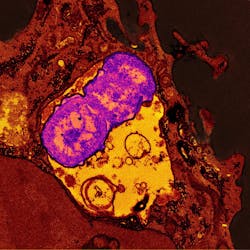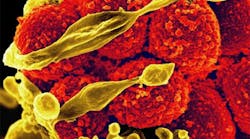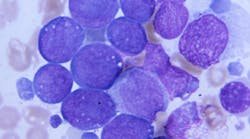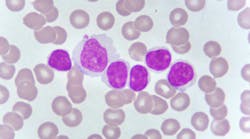New “hypervirulent” strains of the bacterium Klebsiella pneumoniae have emerged in healthy people in community settings, prompting a National Institutes of Health research group to investigate how the human immune system defends against infection.
After exposing the strains to components of the human immune system in a laboratory “test tube” setting, scientists found that some strains were more likely to survive in blood and serum than others, and that neutrophils (white blood cells) are more likely to ingest and kill some strains than others. The study, published in mBio, was led by researchers at NIH’s National Institute of Allergy and Infectious Diseases (NIAID).
A NIAID research group at Rocky Mountain Laboratories in Hamilton, Montana, is investigating whether the microbes can evade human immune system defenses. Their findings were unexpected: the hvKp strains were more likely to survive in blood and serum than MDR hvKp strains. And neutrophils had ingested less than 5% of the hvKp strains, but more than 67% of the MDR hvKp strains—most of which were killed.
The researchers also developed an antibody serum specifically designed to help neutrophils ingest and kill two selected hvKp and two selected MDR hvKp strains. The antiserum worked, though not uniformly in the hvKp strains. These findings suggest that a vaccine approach for prevention/treatment of infections is feasible.
Based on the findings, the researchers suggest that the potential severity of infection caused by MDR hvKp likely falls in between the classical and hypervirulent forms. The work also suggests that the widely used classification of K. pneumoniae into cKp or hvKp should be reconsidered.
The researchers also are exploring why MDR hvKp are more susceptible to human immune defenses than hvKp: Is this due to a change in surface structure caused by genetic mutation? Or perhaps because combining components of hypervirulence and antibiotic resistance reduces the bacterium's ability to replicate and survive in a competitive environment.





